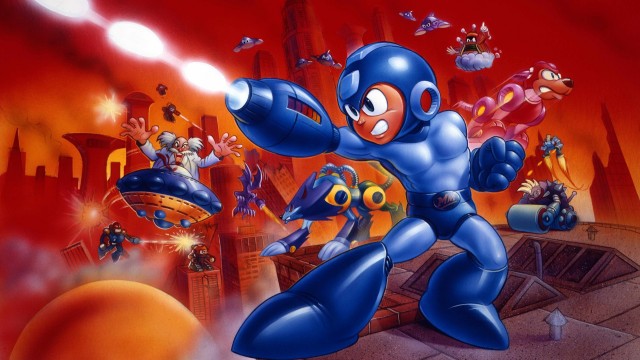
Capcom
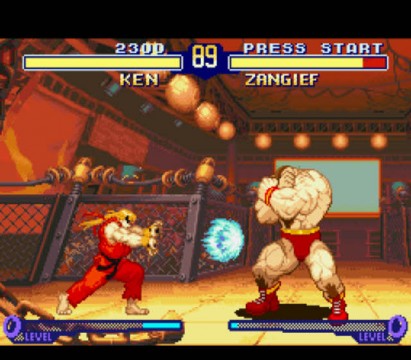
Capcom went through something of a renaissance on SNES, bolstering older franchises and establishing new ones, resulting in a very respectable portfolio of titles for the console. Mega Man initially made the leap to SNES with Mega Man 7, but Capcom eventually came to focus instead on its overhaul of the series with Mega Man X. The X titles brought a sense of grandeur and intensified action that the original titles didn’t quite have, and fans went gaga for the new direction. Mega Man Soccer sadly dropped the ball (a pun!) in terms of quality, but overall, Mega Man was alive and stronger than ever on SNES.
Another game that carried over from NES was Ghosts ‘n Goblins, which received a slight name change for its SNES debut as Super Ghouls ‘n Ghosts. Regardless of the name tweak and prettier graphics, the 2D platformer was still one of the most challenging games to hit the console. Dying was a regular occurrence in Super Ghouls ‘n Ghosts, but its high difficulty was part of the game’s allure. Not for the faint of heart, Super Ghouls ‘n Ghosts threw down the gauntlet with as much gusto as its predecessor.
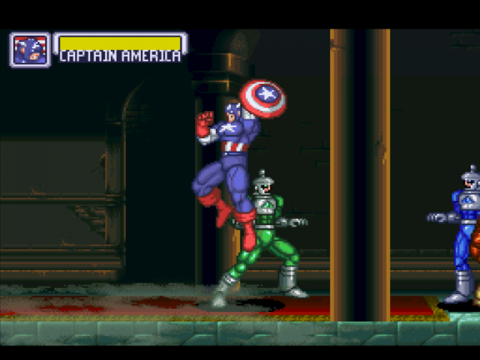
Capcom expanded quite a bit with SNES, introducing two fantastic new series to the console by the names of Final Fight and Street Fighter. Street Fighter II: The World Warrior had made a splash in arcades, but when the arcade sequel was ported to SNES, it became even more of a phenomenon than it already was. Despite the inherent limitations of SNES, the game was a fairly faithful port, and players communed and squared off, eager to show off their prowess. Final Fight, though not the sales juggernaut Street Fighter II was, provided a different sort of fighting experience with its potent brawling mechanics. Players were drawn to its colorful cast in particular, with favorites like mayor Mike Haggar and Cody making their debuts here (Cody would eventually go on to be in the Street Fighter series, himself!).
As if all that wasn’t enough, Capcom also continued to churn out quality licensed titles for SNES. Aladdin was a beautiful recreation of the Disney movie of the same name, featuring gorgeous graphics and intricate platforming mechanics. A couple of fine brawlers based on Marvel properties also came to SNES with Marvel Super Heroes in War of the Gems and X-Men: Mutant Apocalypse. Finally, though not a licensed game, I’d be lax in not mentioning Capcom’s excellent Breath of Fire RPG series, which first bowed on SNES. Capcom was really firing on all cylinders for SNES, and the legacy of its time on Nintendo’s console would make any developer envious.
Rare
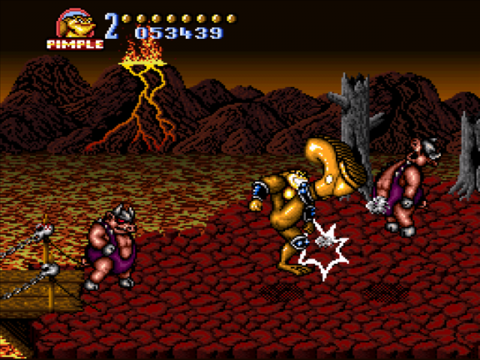
Rare made quite the impression on SNES. Though the developer had already produced numerous titles on NES, it wasn’t quite the household name that it would go on to become. A couple of its earlier titles (released under its old moniker Tradewest) were the brutal Battletoads in Battlemaniacs and Battletoads & Double Dragon. The latter was an oddball team-up to be sure, but it was regardless a challenging and meaty brawler. They were fun games, but Nintendo had bigger and better plans for the developer, and not very long into SNES’s lifespan, Rare became exclusive to the house of Mario.
Arguably, Rare’s biggest contribution to SNES was Donkey Kong Country. Given the opportunity to play with one of Nintendo’s franchises, Rare chose to rework Donkey Kong for a modern audience using its advanced computer rendering technology. DKC was one of the first games to use pre-rendered imagery, something that made the title look unlike anything else on the market. It was jaw-dropping visually, but also had fun and challenging platforming. The game would go on to spawn two more sequels, and singlehandedly helped Nintendo fend off Sony’s encroaching PlayStation while it prepared Nintendo 64 for release.
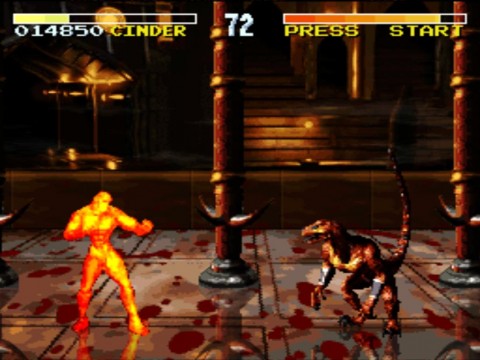
Rare also dropped the fast and combo-heavy fighting game Killer Instinct on SNES, which utilized the same graphics technology as DKC. Though not quite as revolutionary as Street Fighter, Killer Instinct still garnered a rabid fanbase on SNES. In an interesting move, Nintendo, who was partial owner of the Seattle Mariners at the time, took advantage of Ken Griffey Jr.’s clout as a preeminent player to develop its own baseball game. Tapping Rare as developer for the sequel to that game, Ken Griffey Jr.’s Winning Run Baseball was a marked improvement and cemented Rare’s versatility as a developer. Rare was a key player in keeping SNES competitive in its twilight years, and became deeply loved by Nintendo players as a result.
Nintendo
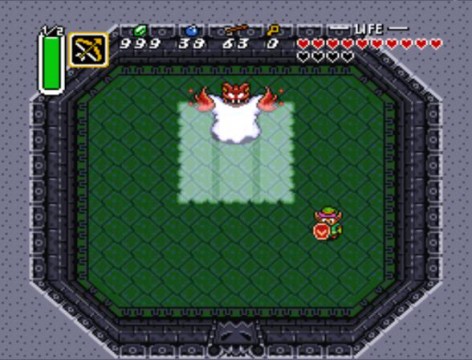
As is often the case, the company who arguably made the biggest impact on SNES was Nintendo. It’s mind-boggling to think of all the games that Nintendo created sequels for and the series that got their start on its then-newest system. Super Mario World was an immediate shot across the bow, a powerful demonstration of SNES’s muscle and a bold step forward for the Mario franchise as a whole. The Legend of Zelda: A Link to the Past and Super Metroid were both uncanny sequels that largely expounded on and innovated with their previous installment(s). Interestingly, all three of those games are some of the most highly lauded titles ever made… and they were all released towards the earlier part of SNES’s lifecycle! Kirby also saw quite a bit of exposure on SNES, starring in numerous titles with varying game styles. Kirby’s most memorable foray on SNES, though, has to go to Kirby Super Star, which boasted multiple games packed into a single cartridge. The veterans of Nintendo really put on a show for SNES.
Original titles were also on-tap from Nintendo, including F-Zero, a blazing-fast futuristic racing title that took advantage of SNES’s Mode-7 technology. That same tech was also used for Pilotwings (a charming, simplistic flight simulator) and Super Mario Kart, which would go on to become a huge pillar for every subsequent Nintendo console (and really established the kart-racer sub-genre). Star Fox featured the first three-dimensional polygonal graphics to be used on a home console, facilitated by the Super FX Chip embedded into each copy of the game. EarthBound was a marked shift for Nintendo, a quirky, nuanced RPG that really stood out from the crowd. Super Mario World 2: Yoshi’s Island was technically a sequel, but it also was Yoshi’s start as a lead character, spinning-off into the Yoshi’s Island sub-series of platformers. It also made use of the Super FX chip, marking Nintendo’s first true attempt at a deliberate and exacting visual style in one of its titles.
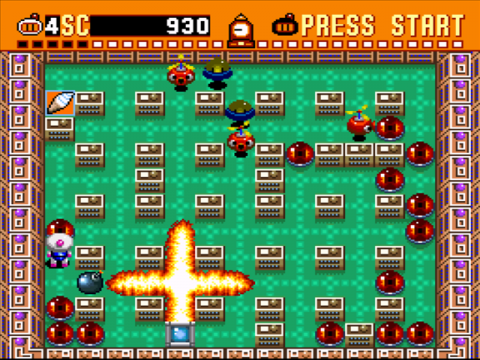
SNES has quite a legacy as a video game console, and for good reason; it was home to some of the most influential and inspiring games ever created. Nintendo, with the help of numerous other developers and third-party supporters, gifted fans with a wealth of incredible experiences that will never be forgotten. This list is truly only a microcosm of the talent and games that made SNES what it was. Nastume’s Harvest Moon, Hudson’s Super Bomberman, LucasArts’ Super Star Wars, and Enix’s Ogre Battle are some other illustrious titles worth noting, and are further testament to just how spoiled for content SNES was. NES is generally the go-to console for talking about classic gaming, but SNES is right there with it, and easily as influential.
Pages: 1 2




 ShareThis
ShareThis






